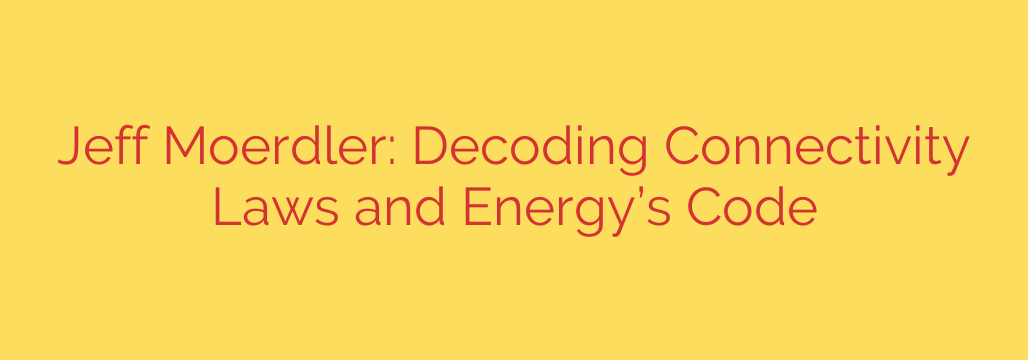
The digital age runs on two fundamental engines: rapid connectivity and reliable energy. Deploying the infrastructure required for our increasingly connected world – think fiber optics, small cells, and sprawling data centers – involves navigating a maze of legal and regulatory challenges that span multiple domains. It’s not just about laying cable or erecting towers; it’s deeply intertwined with securing access, approvals, and crucially, power.
Experts in this complex landscape, like Jeff Moerdler, a partner at Mintz, are essential guides. Their work highlights the intricate legal frameworks governing both telecommunications infrastructure and energy supply. Successfully rolling out digital infrastructure hinges on critical legal processes such as obtaining rights-of-way, securing timely permitting, and managing site acquisition. Delays in any of these areas can significantly hinder the expansion of essential services.
Adding another layer of complexity is the equally regulated world of energy. Building and operating facilities like data centers, which require massive amounts of power, means tackling issues of energy reliability, negotiating with utilities, and addressing growing demands for sustainability and renewable energy sources. As technologies like AI push energy consumption higher, the legal and regulatory hurdles surrounding power access and cost become even more pronounced.
The challenge lies in the convergence of these sectors. Deploying a new cell site or a large data center isn’t possible without guaranteed power access, and that access is governed by specific energy regulations just as the construction itself is subject to telecom and real estate laws, including local zoning. Navigating this requires a holistic legal perspective that understands the nuances of both worlds. Factors like state and local regulatory requirements, the impact of federal funding initiatives (such as those for broadband deployment), and the necessity of smooth interactions with local governments are paramount.
Effectively decoding these interlocking connectivity laws and energy codes is critical for accelerating digital transformation, ensuring infrastructure keeps pace with demand, and successfully integrating sustainable energy practices into the fabric of our connected future. It requires foresight, diligent legal strategy, and a deep understanding of how regulations impact everything from permitting timelines to the feasibility of deploying next-generation technologies like edge computing.
Source: https://datacenterpost.com/jeff-moerdler-the-laws-of-connectivity-and-the-code-behind-the-megwatts/








